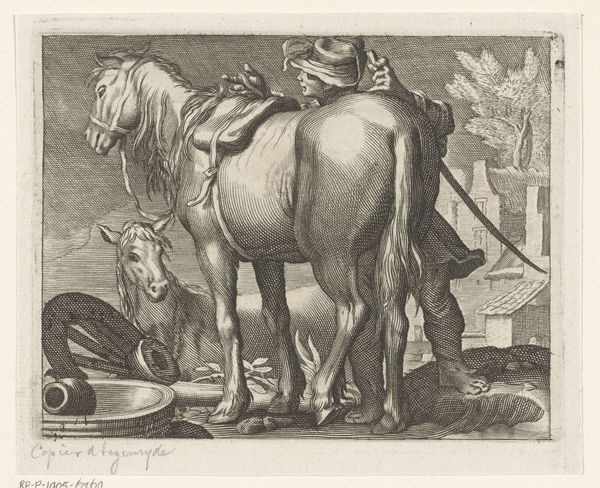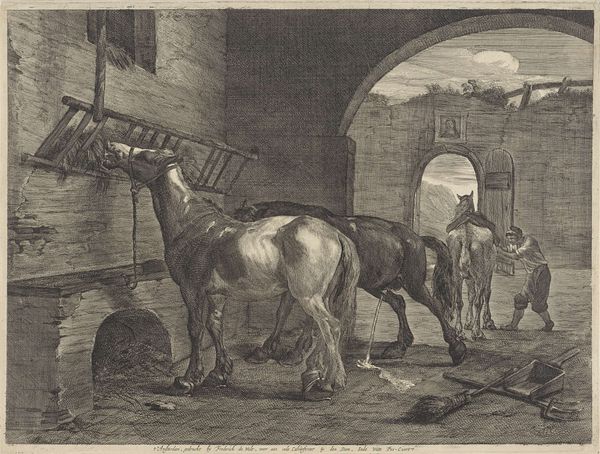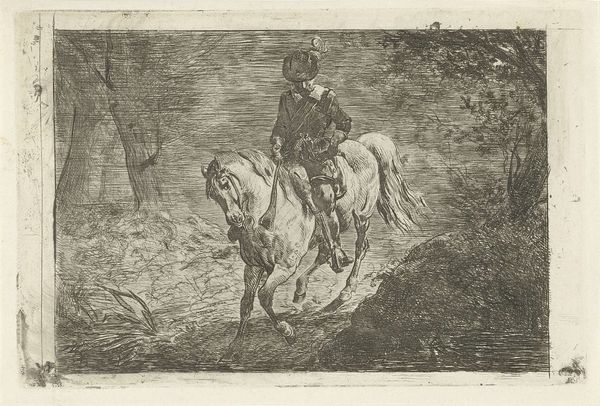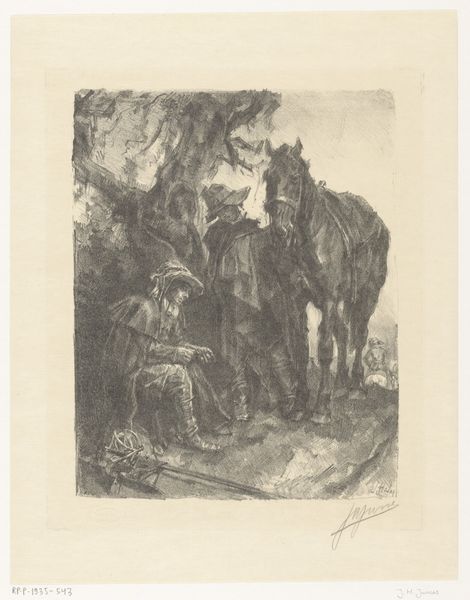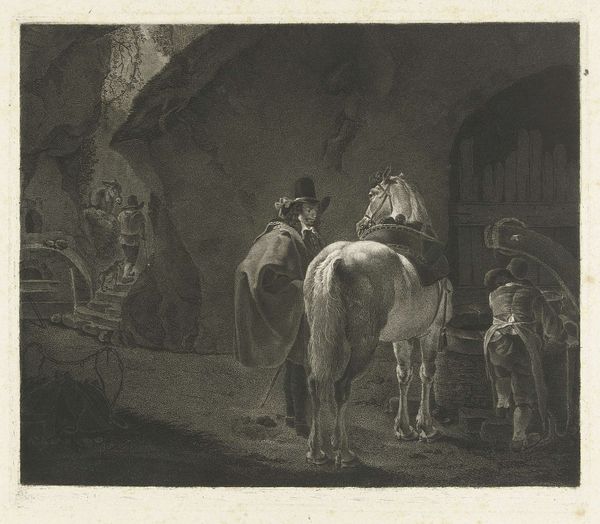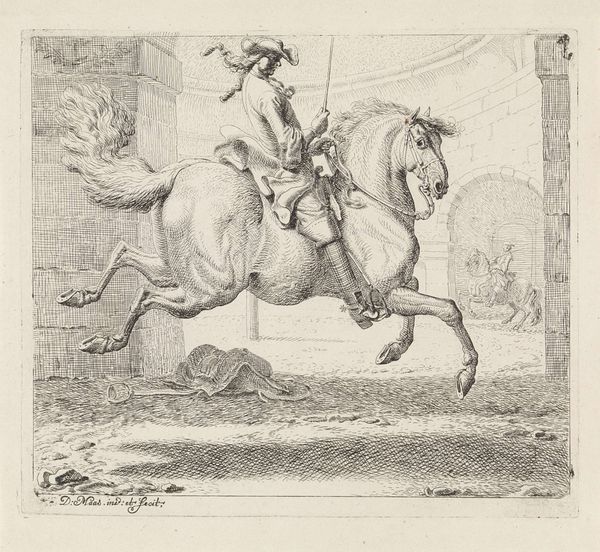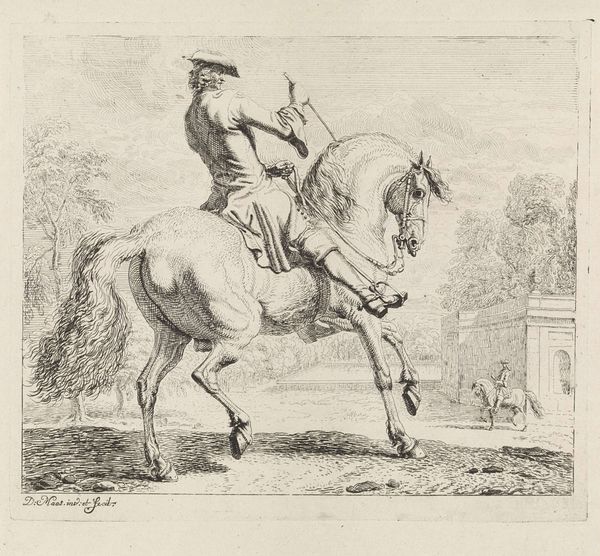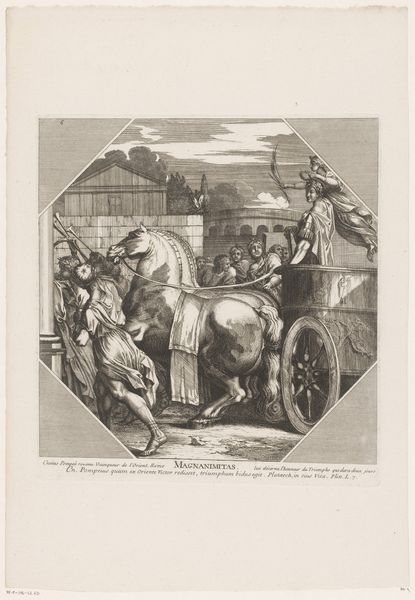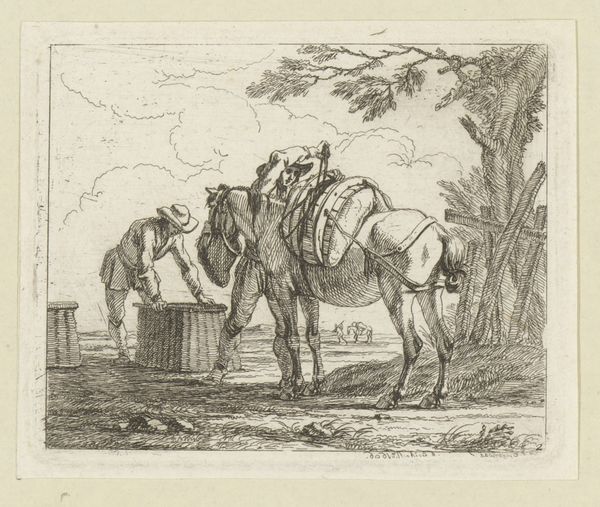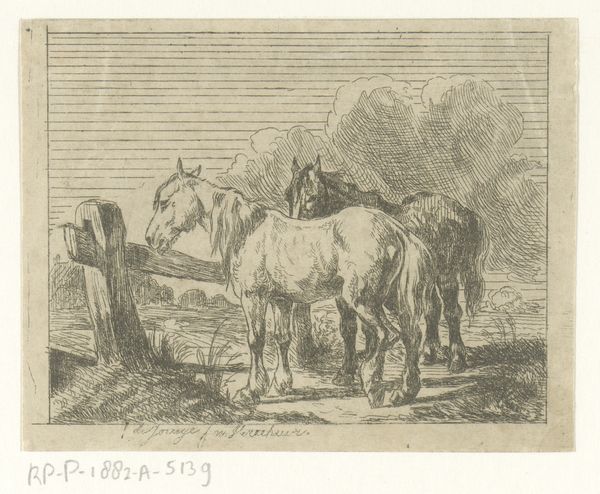
drawing, print, engraving
#
pencil drawn
#
drawing
#
baroque
# print
#
dog
#
landscape
#
pencil drawing
#
horse
#
genre-painting
#
charcoal
#
graphite
#
engraving
Dimensions: height 228 mm, width 175 mm
Copyright: Rijks Museum: Open Domain
Curator: This engraving, entitled "Man met een paard en honden," was created by Pieter Anthony Wakkerdak between 1739 and 1774. The baroque-style print portrays a genre scene with a man, a horse, and dogs in a landscape. Editor: My immediate reaction is how melancholic the scene appears, a man lost in thought alongside his loyal horse and attentive hounds amidst a shadowy landscape. The sepia tones add a real sense of wistfulness, doesn’t it strike you so? Curator: Absolutely, there’s a strong sense of atmosphere created here. The way Wakkerdak utilizes the symbolic relationship between man and beast places it within a historical framework ripe with considerations of power, companionship, and the changing social dynamics of the 18th century. Considering the historical context, this is not simply an image of companionship, it embodies social structures as well. The horse, historically linked with aristocracy and labor, raises pertinent questions. Editor: I see what you mean. The horse in art has always signified status and strength. And those dogs, positioned around the horse as if guardians, evoke enduring loyalty and protection. It's a potent image – a carefully constructed composition featuring these characters set amidst Baroque stylings. But, what do you make of the statue looming on the left side? Curator: The inclusion of the classical statue offers another symbolic layer. We need to understand Wakkerdak's conscious interplay between classicism and the realities of his time, which also calls us to understand this print within the context of emerging Enlightenment ideals and their tensions with older traditions. Does the statue represent an unattainable ideal? Editor: It is compelling to think of it that way – with the statue serving as an unreachable classical echo amidst an evolving social tapestry. It subtly infuses even more intrigue. The artwork reveals how historical symbols permeate the artist’s vision of eighteenth-century life, how this one is embedded in his vision. It’s more than just a scene; it is a statement. Curator: It is true; by considering Wakkerdak's artistic decisions with the interplay of animals, classical symbols, and contemporary figures, it provokes broader conversations regarding historical inequities in societal evolution. Editor: Indeed, I find that thinking about how symbols echo and evolve helps unlock many nuanced details woven in the artwork. Thank you for shedding light on its historical depths, allowing the image to speak in ever richer tones!
Comments
No comments
Be the first to comment and join the conversation on the ultimate creative platform.
